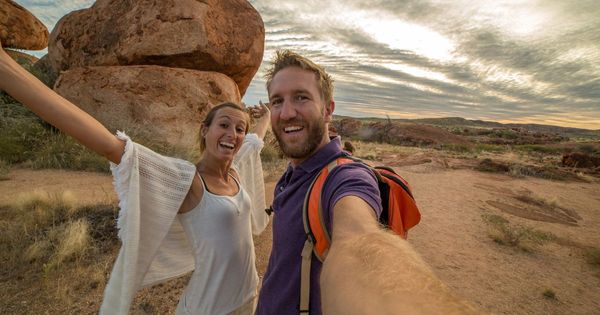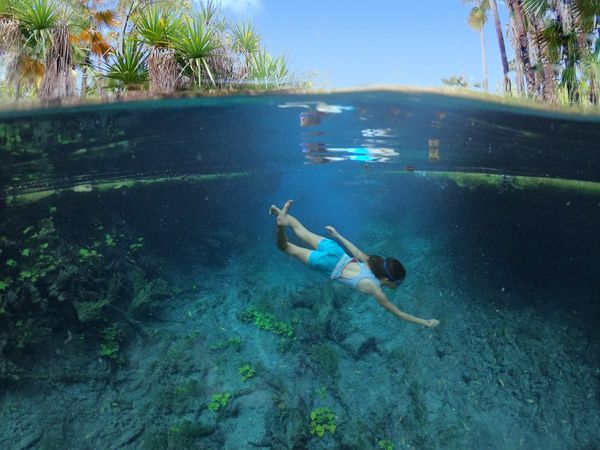Visiting the Northern Territory will become pricier for tourists as the NT government marches on with plans to introduce fees for dozens of famous swimming spots and parks.
Territorians will be exempt from the new pay-to-visit scheme, which will take effect on April 3 next year.
But interstate and overseas families will be set back $25 if they want to visit a string of the Territory's national parks with some of the most popular swimming spots, including Edith Falls, Litchfield and Mataranka hot springs.
The new scheme, which the government is calling a Parks Pass, will offer day passes, two-week passes and an open pass with different prices for individuals and families.
Parks and Wildlife executive director Sally Egan said revenue from fees would be invested into the "protection, maintenance and safety of our parks and the creation of new visitor experiences".
The new fees will apply to 50 of the 85 NT government-managed parks and reserves across the Territory, including Nitmiluk National Park, Karlu Karlu, the Devils Marbles Conservation Reserve, the Shoal Bay Coastal Reserve and the famed hot springs at Elsey National Park, Mataranka.
The full list can be found here.
Visitors will still be required to pay camping and walking fees in addition to a Parks Pass, which means hiking the Jatbula and the Larapinta trails will cost even more next year.
"Nothing at the moment that we are hearing or seeing is suggesting that people will have a real problem and it would stop them coming to the Northern Territory," Ms Egan told the ABC.
Dalabon man Manuel Pamkal, a tourism operator in the Katherine region, shares his Indigenous culture and art with thousands of tourists every year.
While he relies on visitors to keep his business alive, he values even more passing on knowledge to maintain a living culture. He worries that asking tourists to fork out more money could make some think twice.
"It's not fair … when families come it costs them lots of money," he said.
"We all know that fuel prices have gone up, food, and they are already paying money for camping … I think swimming should be free."
Tourism Central Australia chief executive Danial Rochford said the Parks Pass could have a positive impact on drawing tourists to the Territory — if the revenue was spent in the right way.
The government is expecting the Park Pass could bring in $7 million, when combined with the hiking and camping fees, which Mr Rochford said would be a significant investment fund for national parks.
"No-one likes to see an increase in charges," he said.
"But as we invest in our national parks, and these monies flow through to more rangers, better infrastructure and more services, that can only make the proposition to visit the Northern Territory, a better one."
A spokesperson from the Department of Environment, Parks and Wildlife said consultations with tourism operators had been extensive to ensure the Parks Pass was implemented in a way that worked for them.
"For example, the extension for operators goes past next year's dry season, and is consistent with the way the introduction of the walking fees was implemented last year, giving the industry plenty of time to adjust," the spokeseperson said.
"It's a very small cost for interstate and international visitors overall and it pays for the parks, land and facilities to be cared for."
Francisco Argandona, a traveller from Bolivia, said he would be happy to pay a small fee to visit a park or swim in one of the NT's famous swimming spots, adding that it was crucial the money was siphoned back into conservation.
"I went to Uluru, where you pay to get in, and you feel the difference — the place is more clean, more safe, it feels better preserved," he said.
He said the fee for individuals like himself was a little too expensive, especially when many young travellers are trying to stretch their funds to last for months in an expensive country.
"If it's $5 it will be fine, if it was $10 or $20, I don't know … maybe I wouldn't go."










